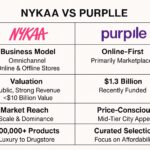Grab vs Uber vs Ola
March 25, 2024
Industry: ride hailing

Ride-Hailing’s Triumvirate: Navigating Grab’s Local Mastery, Uber’s Global Dominance, and Ola’s Regional Ambition. While Uber leverages its global scale and technological prowess, Grab offers an integrated platform catering to regional needs, and Ola combines local expertise with ambitions for international growth. Each company’s strategy reflects its operational environment and market ambitions, emphasizing the dynamic and multifaceted nature of the ride-hailing industry.
In analyzing the competitive landscape of ride-hailing services, we delve into three major players: Grab, Uber, and Ola. Each of these companies has carved out significant market share in their respective regions and beyond, adapting and evolving in the fast-paced world of mobility services. Here’s an in-depth comparison across various dimensions:
Business Models:
- Grab: Originating in Southeast Asia, Grab has extended beyond its core service of ride-hailing to offer a wide array of services, including food delivery, financial services, and even healthcare in some regions. Its super app approach aims to offer a comprehensive ecosystem, addressing a multitude of consumer needs in a single platform.
- Uber: As a global leader in ride-hailing, Uber’s presence spans across continents, providing not just passenger transport but also branching out into food delivery (Uber Eats) and freight (Uber Freight). Its business model focuses on scalability and leveraging network effects, aiming to reduce reliance on car ownership globally.
- Ola: Predominantly focused on the Indian market, Ola has expanded internationally, including to the UK and Australia. Ola differentiates itself with a localized approach, offering a range of vehicle options tailored to each market, from autos to luxury cars, and is investing heavily in electric mobility.
Market Presence and Expansion:
- Grab: Dominates in Southeast Asia with a strong presence in eight countries and over 300 cities, focusing on local needs and preferences.
- Uber: Operates in approximately 70 countries and 10,000 cities, leveraging its global brand and technology platform to adapt to local markets.
- Ola: While focused on India, Ola has begun strategic international expansion, targeting similar market dynamics and leveraging its experience in one of the most competitive ride-hailing landscapes.
Financial Performance and Valuation:
- Uber Technologies, Inc. (UBER): As a publicly traded company, Uber’s valuation can fluctuate significantly based on market conditions. As of early 2023, Uber’s market capitalization was around $70 billion, but this number can vary daily with stock price movements. Uber’s valuation reflects its global footprint, diverse service offerings (including ride-hailing, food delivery, and freight), and recovery trajectories post-pandemic.
- Grab Holdings: Grab went public in December 2021 through a SPAC merger, touted as the biggest U.S. equity offering by a Southeast Asian company. At the time of its public debut, Grab was valued at around $40 billion. However, like Uber, its valuation is subject to market dynamics and performance metrics. Post-IPO performance, regional economic factors, and expansion of services beyond ride-hailing significantly impact Grab’s valuation.
- Ola (ANI Technologies Pvt. Ltd.): Ola remains privately held, making its valuation less transparent and more reliant on funding rounds and internal estimates. In 2021, reports suggested that Ola was seeking a valuation of around $7 billion to $8 billion as it prepared for a potential IPO. Ola’s valuation is influenced by its market position in India, expansion efforts, and investments in electric vehicle technology.
Technology and Innovation:
- Each company invests significantly in technology to enhance user experience, optimize logistics, and expand service offerings. Uber’s autonomous vehicle research and Ola’s electric vehicle initiative are examples of forward-looking investments that could define future competitiveness.
Competitive Dynamics:
- Market Specificity: Grab’s stronghold in Southeast Asia provides insulation against global giants but requires constant innovation to maintain its lead. Uber’s global footprint offers diversified revenue streams but comes with regulatory and operational complexities. Ola’s deep understanding of Indian consumers is a strength, but its international success is yet to be proven on a broader scale.
- Strategic Partnerships and Investments: Collaborations with automakers, tech companies, and even financial institutions are key to expanding service offerings and enhancing customer experiences.








